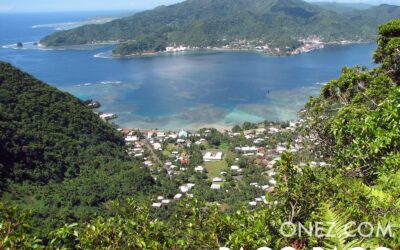Oceania is one large region that is split into four smaller parts. The first part is Australia and New Zealand, the two biggest and most developed countries in the area. The second part is Melanesia, which includes island nations like Fiji, Papua New Guinea, the Solomon Islands, and Vanuatu. The third part is Micronesia, home to small countries such as Kiribati, Nauru, Palau, the Marshall Islands, and the Federated States of Micronesia, along with U.S. territories like Guam. The last part is Polynesia, covering Samoa, Tonga, Tuvalu, the Cook Islands, French Polynesia, and even Hawaii. Together, these four sub-regions—Australia & New Zealand, Melanesia, Micronesia, and Polynesia. Landscapes range from Australia’s dry Outback to rain-soaked volcanic peaks and coral reefs. English is common in Australia and New Zealand, while many islanders speak Indigenous languages and local creoles. People earn a living through farming, fishing, tourism, and mining, and wildlife includes kangaroos, kiwis, and colorful reef fish.
Oceania & Its Sub-regions
Australasia
Australasia covers the two largest countries in Oceania—Australia and New Zealand. Australia is a vast land of red deserts, tropical rainforests, and the Great Barrier Reef, while New Zealand is famous for its snow-topped mountains, green hills, and fjords. Both nations speak mostly English and enjoy high living standards. Farming, mining, and tourism bring in much of their money, and each place has unique wildlife, from kangaroos and koalas in Australia to kiwis and penguins in New Zealand.
Oceania & Its Sub-regions
Melanesia
Melanesia is the south-western corner of the Pacific, running from Papua New Guinea down to New Caledonia. It holds four independent countries—Papua New Guinea, Fiji, Solomon Islands, and Vanuatu—plus the French territory of New Caledonia. Most islands are covered with thick rainforests and edged by colorful coral reefs. People grow crops like sweet potato and taro, fish in warm lagoons, and speak hundreds of local languages as well as pidgin English or French. Gold, timber, and nickel add to the economy, and visitors come for diving, volcano treks, and lively village dances.
Oceania & Its Sub-regions
Micronesia
Micronesia is a group of islands just north of the Equator in the western Pacific Ocean. The region covers a large area of sea, but each island is small. It has five independent countries—Kiribati, Nauru, Palau, the Marshall Islands, and the Federated States of Micronesia—plus U.S. territories such as Guam and the Northern Mariana Islands. Most islands are low, sandy coral formations. Residents use local languages and English for school and trade. Main income sources are copra (dried coconut), tuna fishing, and tourism; some visitors come to study the many World War II shipwrecks.
Oceania & Its Sub-regions
Polynesia
Polynesia covers a large triangle of the Pacific Ocean, with Hawaiʻi at the top, New Zealand at the bottom left, and Easter Island at the bottom right. Inside this triangle sit many island groups, including independent countries such as Samoa, Tonga, and Tuvalu, and territories like French Polynesia, American Samoa, the Cook Islands, Niue, Tokelau, and Wallis and Futuna. Most islands are either high volcanic peaks or low coral atolls. People speak related Polynesian languages and often use English or French for school and business. Local jobs rely on tourism, fishing, and money sent home by family members working overseas.

